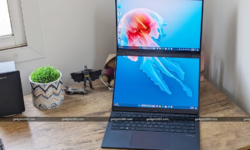Bothered about radiations from phones? Here’s what you can do
Electromagnetic radiation is harmful
Just yesterday, International Data Corporation (IDC) revealed that India was at an all-time high in 2018 as far as smartphone shipments were concerned. With over 142 million smartphones being sold last year as compared to 124 million in 2017, it is safe to say that more people are now using smartphones than ever. There’s also a raging debate on the effects of smartphones on our lives that’s ensued recently as people struggle to find a “phone-life balance”, a term widely used by Motorola in their study published last year.
Then came PUBG Mobile and it just acted as a fuel to the smartphone-addiction debate with people advocating for a ban on the battle royale game. Around the same time, a report published by statista based on data from Bundesamt für Strahlenschutz (German Federal Office for Radiation Protection) revealed a list of smartphones currently available across the globe with the highest amount of SAR (Specific Absorption Rate) value.
The list states that Xiaomi’s Mi A1 is the phone that emits the highest amount of electromagnetic radiation followed closely by OnePlus 5T, Mi Max 3, OnePlus 6T among others. There are a lot of popular smartphones in the list and this has rekindled a debate with the general public as to whether they should use these phones, if at all?
Electromagnetic radiation is harmful
You see, electromagnetic radiation is harmful, there are no two ways about it. However, the electromagnetic waves differ in wavelengths and frequencies and are categorised on the basis of the same. So, you have radio waves that count as the least radioactive, followed by microwaves, infrared radiation and visible light. These are pretty much found in consumer products like radio, televisions, home appliances and smartphones among others. Radio waves are on the extreme end of the spectrum due to their low frequencies and are further categorised under ionising radiation alongside microwaves, IR and visible light. The ionising kind of radiation is not powerful enough to impact the human body. The visible light that is produced from say, the lightbulbs is more ionised than that of radio or microwaves and theoretically, is more harmful.
The ionising radiations consist of ultraviolet (UV) waves (yeah! the ones that’s discharged from the sun), x-ray and gamma waves. These sources of radiations are very much damaging to the human body and have drastic effects on the DNA of a person.
Why the uproar?
With that out of our way, let’s take the impending issue back in our hands. Why is there so much hullabaloo over Xiaomi and OnePlus phones with the highest SAR value? First, the Bundesamt für Strahlenschutz report states that the Mi A1 absorbs 1.75 watts per kg of radiation but forgets to mention that the tests were performed on the European version of the phone. The Xiaomi Mi A1 that is sold in India has a SAR value of 1.26 watt/kg on the head and 0.17 watt/kg body SAR. Similarly, the OnePlus 5T has a SAR value of 1.38 watt/kg on the head and 1.25 watt/kg on body.
Second, the report also reveals that the German certification lab Der Blaue Engel has set criteria for certifying phones that only emit less than 0.60 watts/kg of absorption rate. In retrospect, SAR values in India are limited to 1.6 watts/kg while in the EU, its 2.0 watt/kg. Clearly, if anything, we should advocate for a reduction in the SAR value limit in India instead of blaming the smartphone companies.
Third, a similar report by Statista in 2018 indicated that smartphones such as the Mi A1 and OnePlus 5T are dual-SIM smartphones. In theory, a phone having two sim cards will naturally have a higher SAR value when in use. Even more so, if the network penetration is not very good which would result in higher emissions. Interestingly, the general public also seemed to be fine with the reports last year which listed equally popular smartphones with a higher SAR value and guess which smartphone topped the list? Xiaomi’s Mi A1.
So, what’s changed? Absolutely nothing other than some bad reporting and the fact that we Indians do like to blow some issues out of perspective. As far as smartphone manufacturers such as Xiaomi and OnePlus are concerned, their phones are well within the permissible SAR value limits. Smartphones aren’t harming you as much as some of the other elements that you come across, such as liquor and cigarettes. And PUBG is way, way down that line.
What can you do?
Easily, one of the best things to do if you’re bothered about the radiations from the phones causing health issues is to minimize mobile phone usage. Use earphones while taking calls and do not sleep beside your phone at night. Basic smartphone usage etiquette will go a long way in reducing electromagnetic radiation and maybe, you find the phone-life balance after all.




